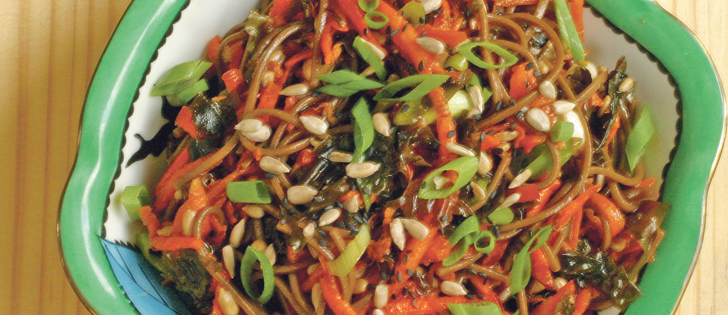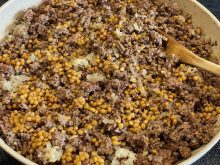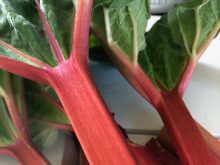Most of us don’t live near the ocean but that is no longer a reason to not use seaweed or sea vegetables in our meals.
There are several foragers on both the Pacific and Atlantic coasts that have successful businesses collecting and drying a number of varieties.
The collection locations are often remote for better purity, and the seaweeds are dried before shipping to maintain freshness.
The products are available in many health food stores or online.
Seaweed contains a long list of beneficial nutrients. It can contain alginic acid and fucoidan that are said to help relieve constipation and diarrhea and balance cholesterol and sugar levels.
Read Also

Nutritious pork packed with vitamins, essential minerals
Recipes for pork
Fucoidan is thought to be beneficial in reducing some cancers but more research is needed. It may also cause diarrhea or bloating because it is high in fibre.
While it is considered safe when consumed as seaweed, it should not be taken by people taking anticoagulant medications to slow blood clotting because it too acts as an anticoagulant.
It is rich in calcium, magnesium, potassium, sodium, sulfur, silicon and iron and high in some B-complex vitamins. It contains moderate amounts of phosphorus, selenium, manganese and zinc and small amounts of Vitamins A, C, E and G.
Seaweed absorbs the nutrients of the ocean but it can also absorb the contaminants in the water. That is why it is often harvested in remote areas.
Most of the time the seaweed is reconstituted before use and it does bulk up to sometimes five times their dried size. Start with a little until you get to know how to work with it. Wakame tends to be milder in flavour, while kelp and kombu are stronger flavours.
These are some of the varieties of seaweeds harvested:
- Kombu — This is famous for being used to make miso broth. It is a large brown seaweed with a dense texture.
- Wakame — It can be added to salads, soups, fish, rice and lentils. It is one of the milder flavoured varieties. Wakame has been used by Asians for centuries for blood purification.
- Bull Kelp — Chop and add to soups, salads, rice and pasta.
- Bladderwrack — This is a brown seaweed that has been used medicinally for centuries. It is said to be the first source of iodine and has been used in treatment of thyroid disorders. It is most often made into a tea because it be-comes very tough with drying. Steep dried bladderwrack overnight or a few hours. Flavour with ginger, mint or cinnamon and add a bit of honey.
- Macro — this is a generic name for a variety of larger seaweeds.
Sea Vegetable Salad
- 1/4 oz. dried mixed seaweed 10 g
- 2 tbsp. grated ginger 30 mL
- 3 tbsp. toasted sesame oil 45 mL
- 2 tbsp. tamari or soy sauce 30 mL
- 1/4 c. rice vinegar 60 mL
- 2 tbsp. brown sugar 30 mL
- 1 clove garlic, minced
- 2 c. carrots, grated 500 mL
- 1 tbsp. sesame seeds 15 mL
- 3 tbsp. sunflower seeds 45 mL
- 2 green onions, sliced
- 1 bunch soba noodles
- Place seaweed in a bowl and cover with two cups (500 mL) water. Soak for five to 10 minutes while preparing the dressing.
- Cook soba noodles according to package instructions. Drain and rinse with cold water. Drain thoroughly.
- Whisk ginger, oil, tamari, vinegar, garlic and sugar together in a small bowl. Drain seaweed and gently squeeze out water. Chop fine. Toss with carrots, seeds, onions, noodles and dressing.
Adapted from Untamed Feast.
Miso Soup
Miso soup is a staple in the Japanese diet and is served at breakfast, lunch or dinner. Dashi is the clear, flavourful sea stock used in this soup and it is easy to make.
- 1/2 c. dried wakame 125 mL
- 1/4 c. white miso 60 mL
- 6 c. dashi 1.5 L
- 1/2 lb. soft tofu, drained cut into 1/2-inch (1.25 cm) cubes 250 g
- 1/4 c. thinly sliced green onions, green part only 60 mL
- Combine wakame with warm water to cover by one inch (2.5 cm) and let stand 15 minutes, or until reconstituted. Drain in a sieve.
- Stir together miso and 1/2 cup (125 mL) dashi in a bowl until smooth.
- Heat remaining dashi in a saucepan over moderately high heat until hot, then gently stir in tofu and reconstituted wakame.
- Simmer one minute and remove from heat. Immediately stir in miso mixture and onion greens and serve.
Dashi
- 6 c. cold water 1.5 L
- 1 oz. kombu dried kelp 40 g
- 2 pkg. katsuo bushi (dried bonito flakes) 5 g
- Bring cold water and kombu just to a boil in a large saucepan over high heat. Remove from heat and remove kombu.
- Sprinkle katsuo bushi over liquid and let stand three minutes. If necessary, stir to make the katsuo bushi sink. Pour through a cheesecloth-lined sieve or a coffee filter into a bowl.
Stock will keep up to four days in the refrigerator. Cool, uncovered, before chilling. Store covered.
Kelp Scones
- 2 c. all-purpose flour 500 mL
- 1 tsp. granulated sugar 5 mL
- 1 tbsp. baking powder, divided 15 mL
- 1/2 tsp. smoked sea salt 2 mL
- 1 tbsp. kelp powder 15 mL
- 1 tbsp. dried kelp, soaked, drained and cut into small pieces 15 mL
- 1 tsp. fresh ginger, finely grated 5 mL
- 5 tbsp. cold unsalted butter, cut into 1/2 inch (1.25 cm) cubes 75 mL
- 2/3 c. heavy cream 150 mL
- 1 egg
- Preheat oven to 375 F (190 C). Line a baking sheet with parchment paper.
- Mix flour, salt, sugar, baking powder, grated ginger and kelp powder in a medium sized bowl. Add the cubed butter to flour mixture. Working quickly with your fingertips, rub the butter into the flour mixture until most of the butter resembles coarse cornmeal. You can also use a pastry blender.
- In a separate bowl, whisk together the milk and egg until well combined. Add to the flour mixture and stir until the dough starts to come together. Gently knead two or three times and then form the dough into a ball.
- Sprinkle the work surface lightly with flour. Place the ball of dough on the work surface and roll or pat the dough into a circle about one inch thick.
- Use a sharp knife to cut the dough into six or eight wedges. Arrange the scones on the prepared baking sheet, spacing them about one inch (2.5 cm) apart.
- Bake for 15 minutes or until golden brown. Serve warm.
The scones can be frozen unbaked after cutting into wedges. Freeze on a parchment-lined baking sheet.
When frozen, transfer to a freezer bag and they can then be stored in the freezer up to three months. Bake them directly from the freezer for about 25 minutes, turning halfway through for even baking. Adapted from the cookbook Lure by Ned Bell.


















